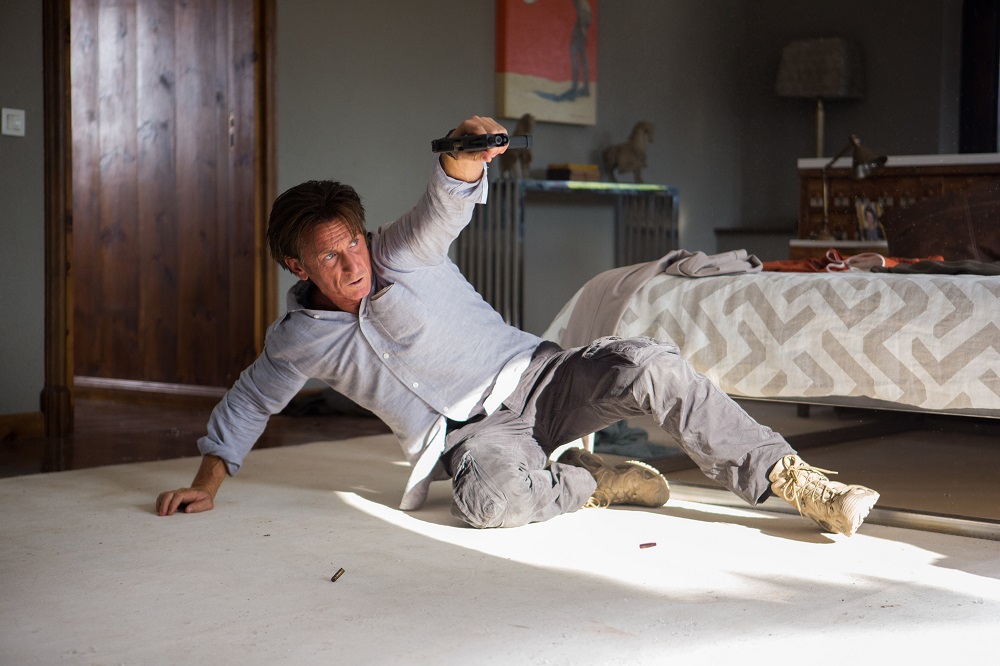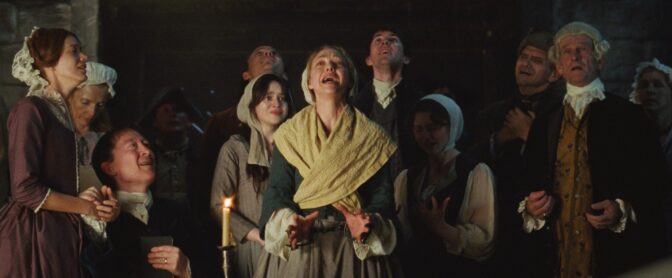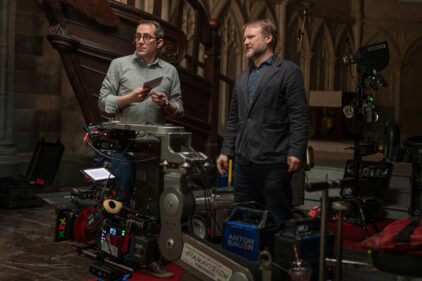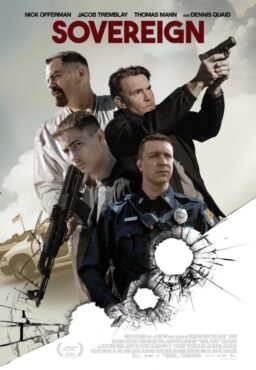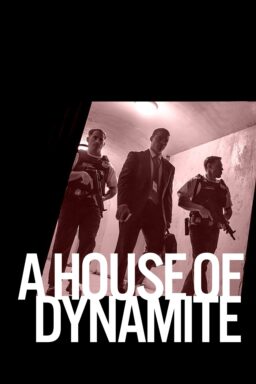In the international action thriller “The
Gunman,” a scrappy, bulked-up Sean
Penn plays Jim Terrier, an ex-special forces government contractor whose hired
assassination of a mining minister in Congo sent him into hiding, and also put
the nation into chaos. Years later, when a group of men are sent to kill him,
Terrier emerges from his anonymity and reconnects with his old war comrades
(played by Mark Rylance and Ray Winstone) in hopes of finding out who’s trying to clean house. During his international game of
cat-and-mouse, he discovers that his old friend Felix (Javier Bardem), who
assigned him the life-changing mission, is now married to Annie, the woman that
Jim had to abandon, as played by Jasmine Trinca.
As Terrier wades through a
sporadic onslaught of mercenaries with a mysterious employer, he receives a
little help from an interpol agent named DuPont (Idris Elba, whose spare time
on-screen hopefully means there’ll be much more in the
possible sequel). And along with Terrier’s
PTSD, the vicious ex-warrior suffers from a vision-impairing head condition
that could render fatal with the wrong blow, raising the stakes of his physical
vulnerability.
The film is directed by Pierre Morel, who has experience in
modifying dramatic middle-aged actors into action heroes, having reinvented the
world’s appreciation for Liam
Neeson’s phone usage with the
2009 thriller “Taken.” Before
that movie, Morel also directed the high-flying parkour action movie “District
B13,” which received a sequel
(“District B13: Ultimatum,” directed
by Patrick Alessandrin) and an American remake (Camille Delamarre’s 2014 “Brick Mansions,” starring the late Paul
Walker).
In an interview held a couple of weeks before the film’s
wide release on March 20, Morel shared his perspective with RogerEbert.com on
creating “The Gunman.” We
discussed his beliefs concerning the presentation of violence, why he had Sean
Penn walk through a wall of flames, his upcoming project about whale wars, and
more.
What new challenges did
‘The Gunman’ present to you, especially considering all of your experience
with action films?
PIERRE MOREL: Well, I
think I’m not just making movies about action. What’s interesting about [“The Gunman”] is that it is more than action. Obviously there’s a more complex plot, with more layered characters
and depth than the previous ones. But it’s also an ensemble, there’s such a great cast. So it was all that. But everything was a new experience. You keep on learning. I
wouldn’t be able to pinpoint one specific moment,
but I am always trying to improve.
When you make your films,
do you think within genre?
I
don’t
do genre, I just do movies.

That just have
shootouts and fight scenes in them, sometimes.
Yes [laughs]. But it’s not about guns, I always say that. If it’s action for action’s sake, I am uninterested. As a viewer, I am happy to go see it,
the purely entertainment. Like “The Expendables”— nothing serious about it,
but it’s so much fun. As the cinematographer that I
was, and as a director, I think I’m more interested in the story itself, and that the movie is
driven by the story. And if the story leads to action moments, then I’m
happy. If it’s too heavy and story-driven, then it becomes drama. But then it’s too action-y driven, then it becomes genre.
So I like to be in the middle, where you get the best of both worlds.
Were there discussions
about the violence within “The Gunman,”especially concerning its presentation?
It’s not about violence. As long as the violence is coherent to the
story and the character, it’s okay. I think, or what I always try to do, is not to glamorize
or glorify violence. It hurts, and it hurts for a reason. Because in real life
if you hit someone it hurts, and if you stab someone it bleeds, and if you kill
someone, it’s dirty. And if you film it in a graphic way just to make it
look cool? No thanks. So if it’s part of the subject, and if it’s not gratuitous violence and it makes sense, then there’s no resistance to have. It’s just that it would make sense at that
moment in the story that the character would do this. As long as it is
coherent, the actors are okay.
Do you think it is
possible to make anti-war film that has violence?
I’m afraid violence is a part of our world. And human beings are a
pretty violent species, we’re not the kindest species on earth. So without glorifying that,
you have to accept that. It’s not about too much or too little, it’s just that we live in a dark, gray world, with dark, gray
characters. But we tend to like gray. But overall, it’s pretty dark gray.
There’s an inherent darkness within the lead characters of your films.
Liam Neeson’s on-screen daughter is kidnapped by sex traffickers in “Taken,” and in “The Gunman,” its inciting events involve a war-torn Congo.

Yeah, I like to set the
action of the movies in real situations, with real issues. For “District B13,” it’s cartoonish and its fun, it’s not a serious matter, but it does take place in that ghettos
around the suburbs of Paris. There are no walls around the suburbs down there [as in “District B13”], but there is a weird ghettoization in a
sense; it is
relevant. “Taken” obviously is very relevant, [as] human trafficking is huge, and
it only made sense to set [the film] in that world. And the violence inherent
to that is coherent, and it makes sense. Same thing for this one, with what’s going on in the black ops of the global
economy, which is not clean, I’m afraid.
Penn’s character in the film has a very debilitating head condition,
which makes him extremely mortal but even forces the audience to readjust their
expectations for action. What intrigued you about pursuing this character
trait?
I
don’t do superheroes. But even superheroes have
flaws: Superman had kryptonite, there’s the heart thing for Iron Man. They all have flaws. I think it’s very interesting. And one of the early
things that we did with Sean [Penn] when we discussed the movie was that we
both liked characters that had some kind of flaw, some kind of weakness at some
point, whether it’s physical or mental, that will impair their
capacity to fight back. And that’s more interesting. Because if you know he’s going to win from the get-go, then what’s the point? So it’s interesting to have his condition because of his past
activities, than it can strike and make it impossible to fight. You can relate to characters with flaws more. I love humans.
Super-humans, as a moviegoer I love [them], it’s entertaining, but I love humans.
And is it a coincidence
that you’ve made another film with a middle-aged lead character?
Coincidence,
I don’t know. I’m that age now too [laughs].

When you compose scenes
of combat, you’re using lots of quick cuts with a great amount of of close-ups.
What’s your interest in this type of filmmaking?
When it comes to
action, it is very technical. You need the hits to be efficient. Even if you
take a few frames off in the middle of shots, just to make it, it needs to
hurt, basically. And then the pacing of when you cutaway, when you go to the
drama and the dialogue, it’s all about the relationship between the characters. I am not
specifically for or against pacing, it just needs to make sense. But then it’s all about the global pace of the movie. If
you’re pre-paced all the way through a piece of
the movie, and when you slow down, it has an impact. And you need to know when
to do that, and not make it too long, so that when you start again it just has
another impact. It’s all about riding waves,
we’re always trying to do that. And I’ve been working with the same editor [Frédéric Thorval] since “District B13,” and we have that synergy with pacing.
What do you feel is the
action director’s responsibility in terms of providing a full picture during
such claustrophobic confrontations?
There’s two things. When it comes to action at
least, what I like about movies, and action scenes, is when I understand what
is going on. And there’s lots of movies where
you don’t understand what is going on, because it’s just one big shaky thing and to me you
actually lose energy by trying to add energy. If you shake the camera just to
hide the lack of energy of what’s going on for real, it doesn’t really work. So you really need to have the right things going
on on-screen, and then capture that. And then you need to see what’s going on, and breathe a bit. So it’s like, “this is where they are
geographically, they’re going this way.” You can’t cheat that. It’s filmmaking vocabulary. Like, “This is where they are,
this is what they do, and ding, ding, ding, ding, and then you pace up and cut
to the hits.” And there’s no magic. If you want the hits to look good, there’s one angle to choose, not two angles.

How did you develop
your eye for action, especially in a compositional sense?
I learned that from the
Chinese. When I was DP-ing, like on the “Transporter” movies, I worked with Corey Yuen, who was a Chinese director,
and I learned a lot from looking at how he shoots every hit in a specific way.
Which I adapted, because I’m not making Chinese movies. And same with Woo-ping Yuen, who
did some stuff with Jet Li. Martial arts movies are their specialty, so they
have a very specific way to shoot action. And it’s very interesting to learn from them, and digest it and use it
for a more western fighting style.
What’s your personal stance on practical filmmaking?
Well, there are a lot
of visual effects shots in this, 600 of them, but the idea is not to see them.
I try to keep things practical as much as possible, until the limits of safety.
I like when there’s an interaction for real. And then you can
enhance them with on-set impact, on-set fire. I think it does create an energy
that the actors can use, rather than faking everything. I need that, that
energy.
What’s an example of how that influenced Penn’s performance?
I always ask the actors
to do everything themselves, and Sean did everything himself. The audience
knows now that they can’t be fooled, it can’t be that whole “this is a wide shot with a stunt guy, then get a close-up of the
real guy…” Come on. We all know. It’s good to have the actors to do everything and it shows, because
then you cannot cheat. And even with this movie, we had Sean walking
through a wall of flames. And you have to make it a controlled environment, but
with the right people. When you have the DVD of “The Gunman,” you can zoom in and see that it’s his face in the towel.
Did this appreciation
for the practical spur from your work on “District B13”?
Yes. [The work] shows.
It’s a real guy jumping from here to there, and
you see it in the same shot, there’s no cutaway.
What’s interesting about parkour, despite offering such exhilarating
stunt work, is that Hollywood hasn’t embraced it as much
as other countries.
There’s so many constraints. There’s safety issues. That’s something that productions need to take into consideration. You
can’t jeopardize a production just because you
want the guys to do the action themselves. If the guys break a leg you’re in for millions. That’s pure production. Even for “District B13,” it was a movie where nobody got hurt, but we had to be prepared
and do the most dangerous pieces at the end, almost [laughs]. So that if
anybody got hurt, it wouldn’t stop us from shooting. And you can’t do that in the states, I don’t think they will let you do that, it’s too dangerous.
As with “District B13” and “Taken,” you’ve started a lot of franchises but haven’t made any of their followups. Are you particularly interested
in breaking that trend by making a sequel to “The Gunman”?
I tend to do new
things. I just want to be compelled by the story. If this one is successful and
they write another one and I like the idea, then of course, why not.
One potential project
you’ve got listed as upcoming is the very intriguing
whaler story “Sierra.” What can you tell us
about that?
It’s about Paul Watson, one of the founders of Greenpeace, who is
an ocean warrior. Have you seen “Whale Wars” on TV, where they’re fighting the Japanese whalers? We’re trying to put together a movie about the early days of this
guy, because he got kicked out of Greenpeace basically because he was too
proactive, and there’s the first couple of
months and years when he got kicked out Greenpeace and rammed and sunk a whaler. He’s a crazy guy, but a really fantastic character. It’s not a biopic, it’s just about this moment, but he’s a really hardcore eco-warrior. And he succeeded, as the quotas
of hunting are lower and lower. We may end up saving the whales, but the damage
has been done, unfortunately. He’s a very good subject. You can get both action and content. With
real issues, in the real world.

